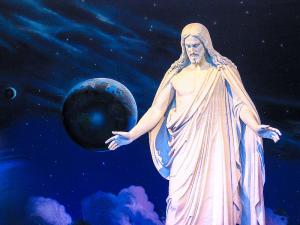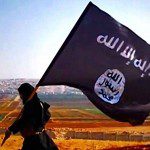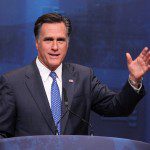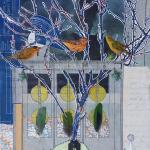Last month the LDS Church reinforced its advocacy of religious freedom by further expanding the resources on that subject available at its Newsroom website. In addition to launching a social media campaign focused on galvanizing support for religious liberty, the Church released several new video segments on the subject in an effort, according to its news release, to “help people of conscience everywhere understand the importance of protecting religious freedom.” One clip is an introductory message from Church Apostle L. Tom Perry, inviting viewers to carefully consider the materials the Church had made available, then seek out opportunities to sustain religious freedom in their own spheres and communities. Another segment, a whiteboard animation reminiscent of the Newsroom’s take on political neutrality, offers a basic introduction to the concept of religious freedom and its vitality. A third, more extensive video combines interviews with Latter-day Saints, people on the street, the reflections of Mormon scholars, and the teachings of the Church’s General Authorities in an effort to establish what religious freedom is, how it is jeopardized, and what Latter-day Saints and others ought to do about it.
The new public offerings on religious freedom run parallel to the recent work of Church leaders, especially two of the its apostles—Elders Dallin H. Oaks and Quentin L. Cook. Within the past few years, both have been active in advocating for the preservation of religious freedom. The topic has been a common theme for Oaks in particular, who has addressed both Mormon and non-Mormon audiences. In 2011, for instance, Oaks (a former justice of the Utah Supreme Court) spoke to an audience at Chapman University on the state of religious freedom in the United States. Honored by the Becket Fund for Religious Liberty with its Canterbury Medal earlier this year, Oaks also addressed that group at its awards dinner, and has raised the subject frequently when speaking to Mormon young adults, college students, and other groups. Elder Quentin L. Cook too has made religious liberty a frequent theme of his preaching to Church members: he addressed this topic at the Commencement Exercises of BYU-Idaho in 2011 and in 2010 at the Church’s General Conference.
Beyond the Church’s apostles, however, a surprising number of other notable Mormon members, leaders, and institutions are involved the study and defense of religious freedom. The Newsroom’s new clip interviews several Latter-day Saints active in the cause: Hannah Clayson Smith, for instance, is legal counsel for the Becket Fund. [http://www.becketfund.org/]. Are Svendsen is an Executive Board Member of the Oslo Coalition of Religion and Belief. And Gayla Sorenson is a Senior Fellow at the J. Reuben Clark Law School’s International Center for Law and Religion Studies. This Center, incidentally, has long been the home of LDS legal scholar Cole Durham, a renowned authority on international religious freedom (see Durham’s interesting BYU devotional address, “The Doctrine of Religious Freedom”) and an active hub of legal discourse on the subject. Each year the Center presents its own Religious Liberty Award to a individual who has distinguished him or herself as a effective religious liberty advocate. Finally, BYU’s increasingly distinguished Wheatley Institution has also made religious freedom a priority. Later this week, its ongoing Religious Freedom Lecture Series will draw two eminent philosophers, Roger Scruton and Michael Novak, to address the subject, with another lecture by Yale legal scholar Akhil Amar to come in December.
Religious liberty is also becoming a subject of increasing collaboration between Mormons and those of other faiths. One of clearest manifestations of this was the visit of Cardinal Francis George to BYU in 2010, while he was serving as the president of the US Conference of Catholic Bishops. George’s forum address, entitled “Catholics and Latter-Day Saints: Partners in the Defense of Religious Freedom,” called for cooperation, stressing the experience of historical marginalization for both Mormons and Catholics in America and asserting that for both groups, the “defense of religious liberty affirms what is deepest in our self-identity.”
Within the past few years, the LDS Church has indeed lent its support to interfaith coalitions. Elder L. Whitney Clayton of the Church’s Presidency of the Seventy now sits alongside American Jewish, Hispanic Christian, Christian Orthodox, Catholic, Baptist and other leaders as part of an Advisory Board for the American Religious Freedom Program, an initiative of the Ethics and Public Policy Center. Through this program the EPPC, a Washington D.C. insitution “dedicated to applying the Judeo-Christian moral tradition to critical issues of public policy,” holds annual conferences, coordinates political activity to sustain religious freedom, and works to educate Americans about the importance of religious freedom and the challenges it faces. Elder Lance B. Wickman, an emeritus general authority and currently the Church’s general counsel, has also contributed to the program’s work.
The new accent on religious freedom raises natural questions: Why the interest in religious freedom? And why now? For one thing, in its previous commentary, the Church has made it clear that it sees its commitment to religious freedom as a essential tenet of its belief, and as growing out of the lessons of its historical experience. Moreover, given the composition of senior leadership in the Church, it seems logical to expect a certain attentiveness toward law. However, in the Church’s recent messaging on the subject, it’s also possible to glimpse some of the important political subtexts to this growing initiative. One is the story, captured in the US State Department’s latest International Religious Freedom Report, of worrisome, “negative trends” in the condition of religious freedom appearing in many parts of the world. But the video segments, essays, and other resources also underscore recent domestic debates in healthcare, particularly those surrounding emergency contraceptives, pharmacists, and healthcare reform. They also allude to emerging conflicts between the autonomy of some religious groups and the LGBT movement.
Given these contexts and what seems be a deepening appreciation of religious freedom among Church leadership, religious freedom seems set to emerge as one of the Church’s new institutional priorities. The current messaging is clearly an effort to educate its members on an issue that has long been taken for granted. The upshot of many recent talks, replayed and reiterated in the new videos, is for members to become conscious, informed, and active in sustaining religious freedom. And collectively, the effect of the Church’s institutional activity is to give it a new standing and new relevance as a stakeholder in public discourse.
Many tough questions about the Church’s commitment to religious freedom remain: To what extent does its support for religious freedom commit the Church to religious pluralism? Will the Church be able to sustain its commitment to religious freedom, even when it requires the defense of unpopular religious minorities? Can the Church reconcile is robust affirmation of religious freedom with its shifting, increasingly empathetic tone toward homosexuals? These are all issues to be worked out. Given that the Church has already made substantial investments in religious freedom, however, and seems to be expanding that commitment, they are discussions we can expect to begin having soon.











